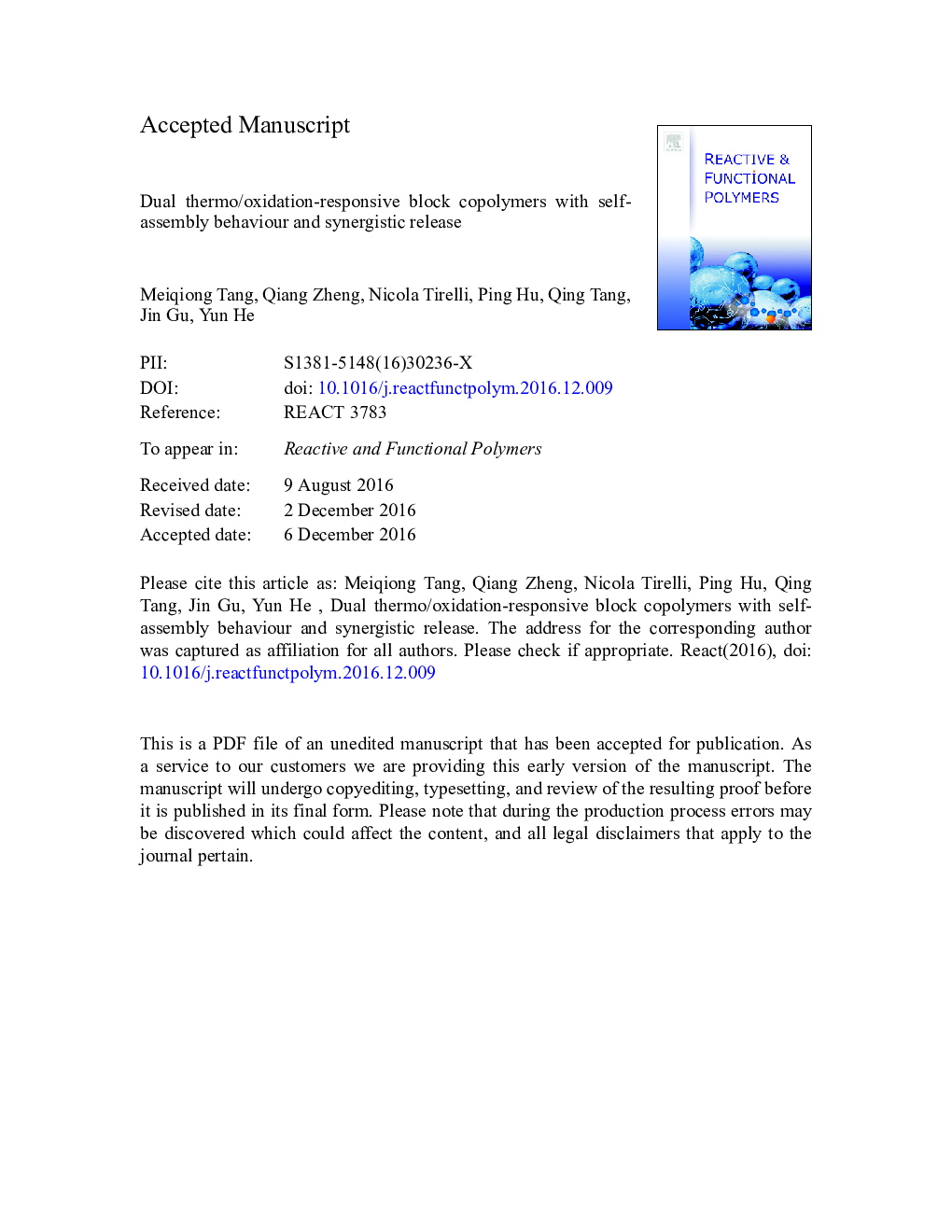| Article ID | Journal | Published Year | Pages | File Type |
|---|---|---|---|---|
| 5209396 | Reactive and Functional Polymers | 2017 | 24 Pages |
Abstract
The synthesis of novel amphiphilic poly(propylene sulfide) (PPS) and poly(N-isopropylacrylamide) (PNIPAm) block copolymers is reported as a strategy to respond stimuli in inflammatory tissues. In addition to the formation of defined PPS-block-PNIPAm assemblies, the encapsulation of fluorescent dyes and the selective response to the heat and oxidants are studied. The synthesis of the dual responsive PPS-b-PNIPAm is carried out by combining a living anionic ring-opening and an atom transfer radical polymerization (ATRP) process. The resulting copolymers are self-assembled in water to form aggregated structures, which are characterized by dynamic light scattering (DLS) and scanning electronic microscopy (SEM). DLS measurements show that heat and oxidants cause a significant change to the hydrodynamic diameter of the particles. Fluorescent spectroscopy data confirms the liberation of the encapsulated dye, which indicates the decomposition of the particles and validates the concept of stimuli-triggered payload release. Finally, cytotoxicity assays confirm that the PPS-b-PNIPAm copolymer is biocompatible with A549 lung cancer cells.
Related Topics
Physical Sciences and Engineering
Chemistry
Organic Chemistry
Authors
Meiqiong Tang, Qiang Zheng, Nicola Tirelli, Ping Hu, Qing Tang, Jin Gu, Yun He,
